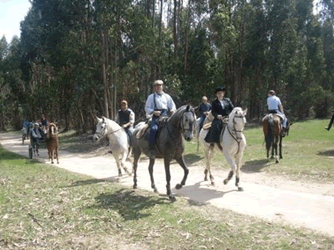THE landscape it is a concept that refers to everything we can perceive using our five senses (touch, sight, smell, taste and hearing). Therefore, the entire terrestrial environment can be considered as a landscape: the chaos of the center of a big city, the space of a farm or the area of a forest.
Due to the scope of this term, it is commonly divided into two main types: the natural landscapes and the cultural landscapes.
At natural landscapes they are expressions of the elements of nature that have not changed or have been little altered by human beings, such as the space of a virgin forest or the top of a mountain. In some definitions, this concept also encompasses natural regions considered inhospitable, that is, that do not present conditions for the maintenance of human life, such as an area of a desert.
At cultural landscapes – also called anthropic landscapes – are the expressions of human activities. They are built from the use and transformation of the elements of nature by activities performed by man. Therefore, all artificially constructed buildings, as well as unnatural interventions about space constitute cultural landscapes, such as the space of a city or a field of production agricultural.
Do not stop now... There's more after the advertising ;)
It is interesting to note that these types often do not segregate and may overlap in space. Thus, there can be natural elements in cultural landscapes and vice versa. When elements of nature are conserved in the space of a building, for example, we have the occurrence of this type of situation.
Contrary to what many people imagine, landscape is an extremely dynamic category. It, in addition to behaving as an expression of human practices or the actions of nature, is able to narrate, through its apparent or hidden manifestations, the history of that space.
It is common to find, in the manifestations of the world, elements referring to the past, recent or remote. Therefore, the main characteristic of the landscape is, without a doubt, the fact that it aggregates, in itself, the overlapping and confluence of the actions of the present and the past, which often coexist side by side.
By Rodolfo Alves Pena
Graduated in Geography
Would you like to reference this text in a school or academic work? Look:
PENA, Rodolfo F. Alves. "Cultural Landscape and Natural Landscape"; Brazil School. Available in: https://brasilescola.uol.com.br/geografia/paisagem-cultural-paisagem-natural.htm. Accessed on June 27, 2021.



